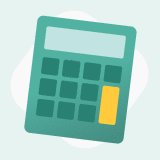
Now is almost definitely the right time to buy a new home.
Singapore home prices have been dropping steadily. The price index for private residential properties in Singapore dropped 3.7% in 2015, compared to a 4.0% drop in 2014. While it’s hard to really say if this suggests that the price drop is slowing down, it’s definitely clear that prices can be expected to keep dropping for the next year, at least.
Last year, we have also seen HDB BTO applications exceeded supply and saw an oversubscription by more than 3 times the available units in the bumper crop at the last exercise!

What’s going to make this worse is the fact that supply of properties is on the rise. A staggering 27,149 private residential units (including ECs) are expected to complete this year. And 2016 promises to bring as many as 28,000 new HDB flats, or about 2,000 more than last year.
With prices falling and supply rising, it’s really a buyer’s market out there. However, because buying a property in Singapore can be a complicated process, you should be aware of what you’re getting yourself into. It is, quite possibly, going to be the biggest financial decision of your life.

What Do New HDB Buyers Need To Know
First, you should make sure all your finances are in order. If you’re looking to apply for a HDB or a bank loan to finance your purchase, make sure you meet all the eligibility requirements, especially the income ceiling. It’s important to also find out just how much you can loan – there’s no point looking at residential units that cost more than the amount you’re able to borrow.
The other thing you definitely need to consider is the downpayment. If you’re taking a HDB loan, your downpayment is 10% of the purchase price. This can be paid using cash or CPF. If your flat costs $400,000, for example, then you can pay $40,000 from your CPF to cover the downpayment.

If you are taking a bank loan, then your downpayment will be whatever your loan doesn’t cover. If you get the maximum loan of 80% of the purchase price, then your downpayment is 20% of the purchase price. That means if your flat costs $400,000, your downpayment is $80,000. Unlike HDB loans, a part of the downpayment has to be in cash. When the downpayment is 20% of the purchase price, 5% will need to be in cash. That’s $20,000 in cold, hard cash you need to have on hand. If you don’t have that much cash on hand, the last thing you should do is to take on a personal loan. Instead, consider looking for a cheaper unit.
Of course, there are more miscellaneous costs involved than just the downpayment, but the downpayment is still the biggest upfront cost. So you should definitely never underestimate it.

What Do Private Home Buyers Need To Know
When it comes to buying private property in Singapore, obviously there’s no option for a HDB loan. Which means, unless you’re a regular on Forbes’ list of billionaires, you probably need to get a home loan with a bank.
As mentioned above, for a bank home loan, you will need to come up with at least 20% of the purchase price as a downpayment. Of the 20%, 5% needs to be strictly in cash, while the remaining 15% can come from cash or CPF. Note that I said, at least. Because of the loan requirements, your downpayment could be as high as 80% of the purchase price if you already have an existing home loan on one or more properties, and your loan tenure is more than 30 years, up to a maximum of 35 years.

How much you can loan from a bank depends on a number of factors too.
Limitations like the Total Debt Servicing Ratio means you can only borrow up to 60% of your monthly income. And this includes other debt obligations too, like your credit cards, car loans and education loans.
Ultimately, you should get an in-principle approval, or IPA, from the bank you’re planning to borrow from. This is an indicator of how much you are able to borrow.

This article first appeared on Moneysmart, by Peter Lin. This article has been modified and reproduced with permission.

 Get a budget estimate before meeting IDs
Get a budget estimate before meeting IDs